Top 5 Deadly Diseases in the world (no. 5 very dangerous)
Top 5 Deadly Diseases in the world
Friends of the healthylifes, this time I will discuss 5 deadly diseases that often occur and a
lot of people with this disease cannot escape death.
From the
author's experience by seeing and paying attention to the incidence of death, I
can conclude the 5 most deadly diseases around us.
For that we must
be aware and maintain health. Let's read 5 deadly diseases in the world.
1. Lymph cancer
Lymph cancer or lymphoma is a type of cancer that develops in the
lymphoid tissue or is also popularly known as lymph nodes. This cancer can also
occur due to the spread of cancer from other organs. Like other types of
cancer, lymph cancer is also dangerous. Unfortunately, this cancer is generally
only realized when the sufferer has entered an advanced stage.
In fact, if the symptoms are noticed early on, the chances of a cure can
be high. Because, if diagnosed at an advanced stage, healing can be quite
difficult. Therefore, it is important to recognize and be aware of the various
symptoms caused by lymph cancer, so that diagnosis and treatment can be carried
out as soon as possible.
Symptoms that may indicate the presence of lymph cancer, such as:
a. Enlarged lymph nodes in the neck,
armpits, or groin.
b. Weight loss for no apparent reason.
c. Frequent fever.
d. Tiring easily.
e. Hard to breathe.
f. Itchy.
g. Cold sweat at night.
2. Diabets
Diabetes is a chronic disease characterized by high blood sugar (glucose)
levels. Glucose is the main energy source for human body cells.
The level of sugar in the blood is controlled by the hormone insulin, which
is produced by the pancreas, which is an organ located behind the stomach. In
diabetics, the pancreas is unable to produce insulin according to the body's
needs. Without insulin, the body's cells cannot absorb and process glucose into
energy
Diabetes Symptoms
a. Often
feel thirsty.
b. Urinating
frequently, especially at night.
c. Often
feels very hungry.
d. Loss
of weight for no apparent reason.
d. Reduced
muscle mass.
e. There
are ketones in the urine. Ketones are a waste product from the breakdown of
muscle and fat because the body cannot use sugar as an energy source.
f. Limp.
g. Blurred vision.
h. Wounds that are difficult to heal.
i. Frequent infections, for example in
the gums, skin, vagina, or urinary tract
3. Heart disease
Heart disease describes a series of conditions that affect the heart.
Some conditions that can affect heart health conditions are blood vessel
disease, such as coronary artery disease, heart beat (rhythm) disorders, and
congenital heart defects.
Symptoms of heart disease in general include:
• Irregular heartbeat.
• Tires easily.
• Breath feels heavy.
• Hard to
sleep.
• Pounding over uncertain things.
There are several factors that cause heart disease, such as:
• Smoking
habit.
• High cholesterol levels.
• Lifestyles are not maintained.
• Hypertension or high blood pressure
increases.
• Overweight.
• Presence of diabetes.
• Age and gender factors
4. Breast cancer
Breast cancer is a condition when cancer cells form in the breast tissue.
Cancer can form in the glands that produce milk (lobules), or in the ducts
(ducts) that carry milk from the glands to the nipples. Cancer can also form in
fatty tissue or connective tissue in the breast.
Breast cancer forms when cells in the breast grow abnormally and out of
control. These cells generally form a tumor that feels like a lump. Although it
usually occurs in women
Symptoms and Causes of Breast Cancer
Breast cancer is often difficult to detect in the early stages because of
its small size. A new lump can be felt if it is large enough. However, not all
lumps in the breast mean cancer. Therefore, it is important to check whether
the lump is cancerous or not.
It is not yet known what causes cancer cells to grow in the breast. But
there are a number of factors that can put a person at risk for this disease.
For example, having menstruation at an age that is too young or too old, and
having family members who also have breast cancer.
5. Cervical cancer
Cervical cancer is cancer that grows on the cells in the cervix.
Generally, cervical cancer does not show symptoms at an early stage. New
symptoms appear when the cancer has begun to spread. In many cases, cervical
cancer is linked to sexually transmitted infections.
The cervix is the lower part of the uterus that connects to the vagina. One of the functions of the cervix is to produce mucus or mucus. The mucus helps pass sperm from the vagina to the uterus during sexual intercourse. In addition, the cervix will also close during pregnancy to keep the fetus in the uterus, and will widen or open during labor
Cervical Cancer Stage
The stage or stage is used to describe the extent of the spread of
cancer. The higher the stage of the cancer, the wider it will spread. In the
early stages, cervical cancer can start from the presence of cervical
dysplasia. The following are cervical cancer stages based on its spread:
Stage 1
• Cancer cells grow on the surface of
the cervix, but have not spread outside the uterus.
• It is possible that the cancer has
spread to the nearby lymph nodes, but has not yet attacked the surrounding
organs.
• The size of the cancer varies, even
more than 4 cm.
Stage 2
• Cancer has spread to the uterus,
but has not spread to the lower part of the vagina or pelvic wall.
• It is possible that the cancer has
spread to the nearby lymph nodes, but has not yet attacked the surrounding
organs.
• The size of the cancer varies, even
more than 4 cm
Stage 3
• Cancer has spread to the lower part
of the vagina, pressing on the urinary tract and causing hydronephrosis.
• It is possible that the cancer has
spread to nearby lymph nodes, but has not yet attacked the surrounding organs.
Stage 4
• Stage 4 cervical cancer has spread
to other organs, such as the bladder, liver, lungs, intestines, or bones


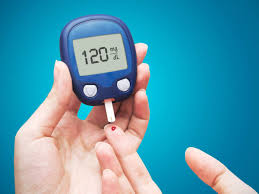


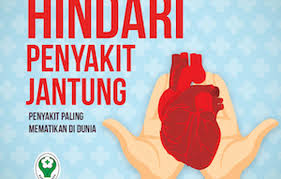
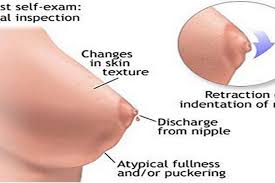
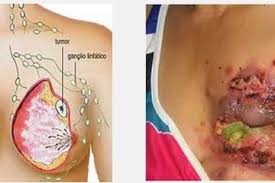

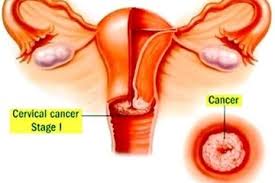
Post a Comment for "Top 5 Deadly Diseases in the world (no. 5 very dangerous)"
thank you for your input and suggestions.